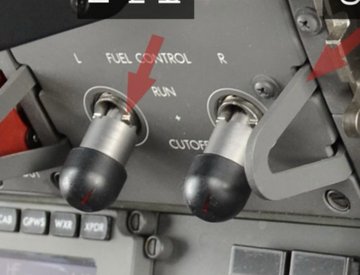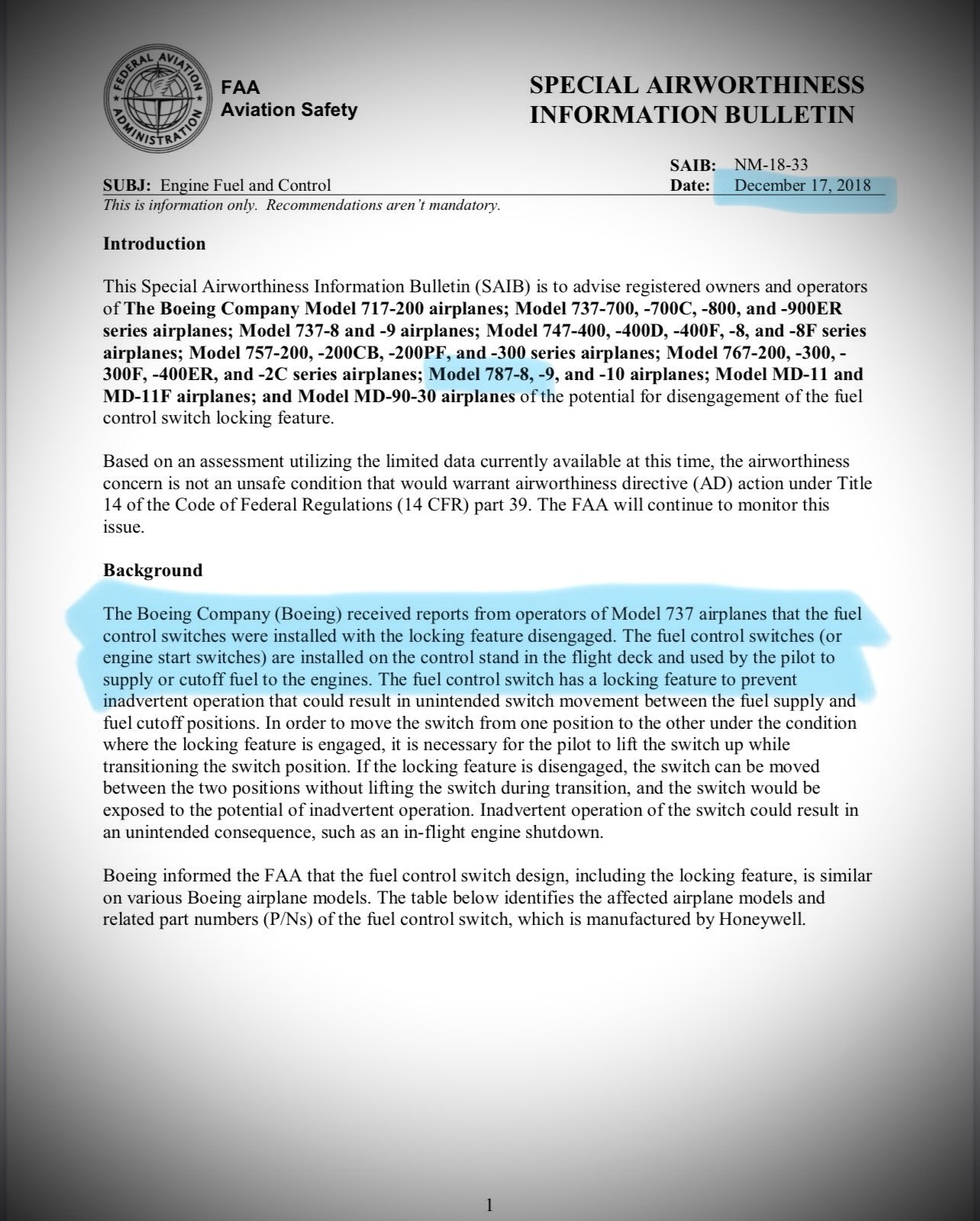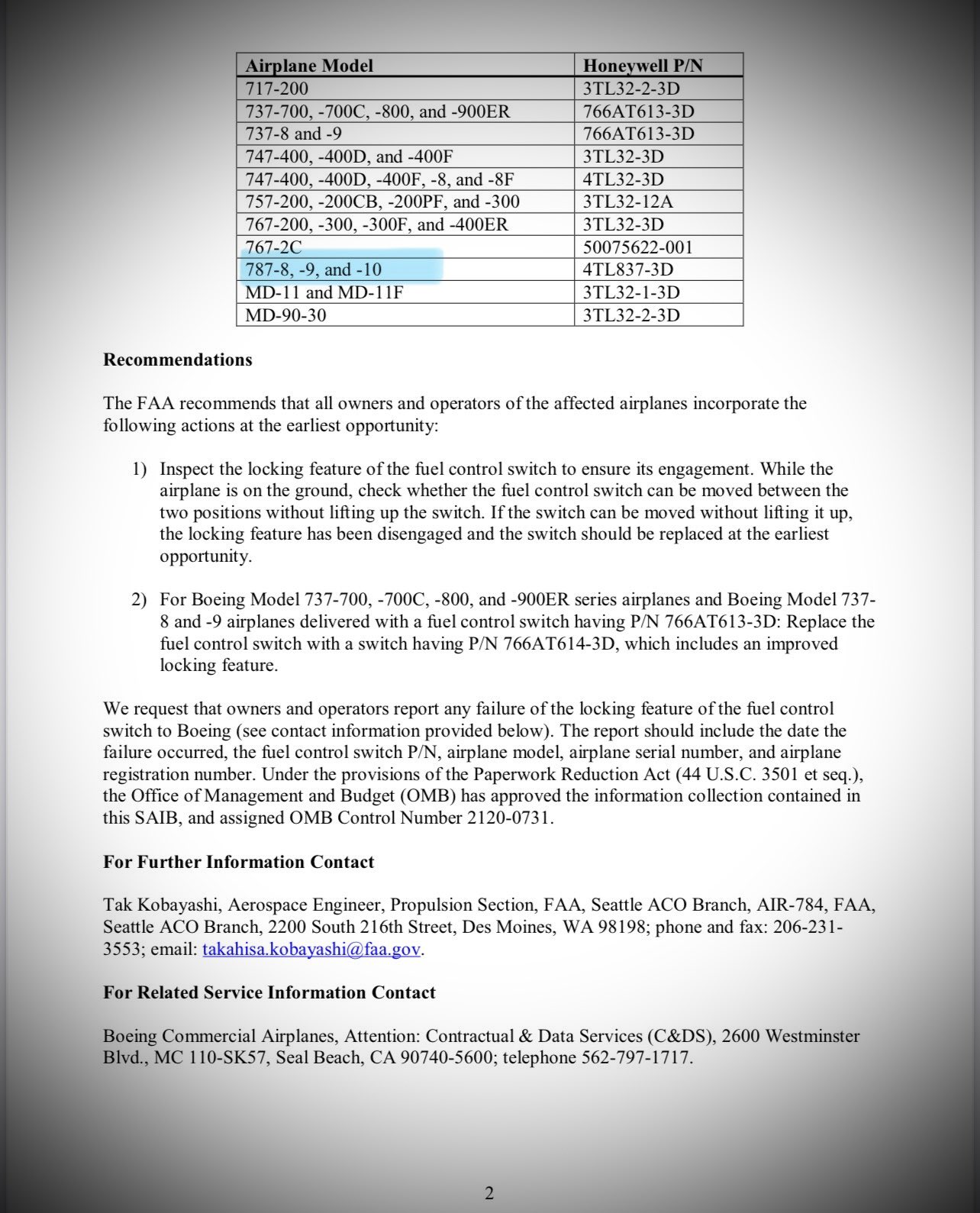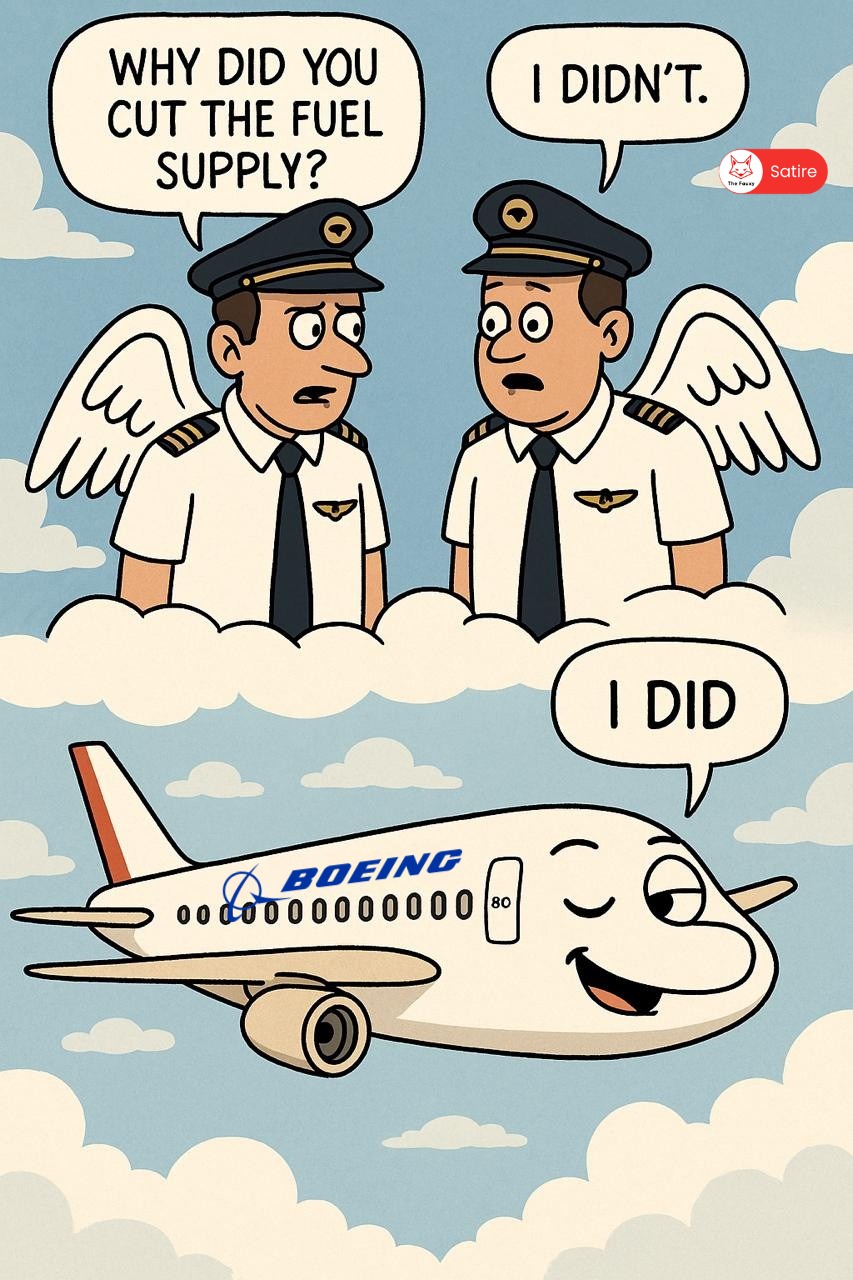Ambar wrote: ↑13 Jul 2025 19:30
The above is a advisory and not mandatory because you may accidentally "bump" into one of the switches but not both which have independent controls. A pilot has made a video of him cutting off the engines by operating one switch after another and you can watch for yourself and see how likely it is for an experienced pilot to accidentally cut off both engines at the same time.
https://www.instagram.com/reel/DMBK6JoS ... U2c3FnaHo0
As for the theory that engine had a malfunction which necessitated recycling it, there are 3 things to remember -
1. Nothing in the FVR contents releases so far suggests there was a problem with the engine.
2. If there was then both pilots would agree to recycle the engine and not one making a unilateral decision just after hitting VLOF.
3.
Boeing and Airbus both have strict guidance against restarting the engines during TOGA below 400ft.
Not sure the hate for Capt Mohan Ranganathan, he flew Boeings throughout his career and was also a trainer, i'd take his words over someone like Capt Augustine who have no experience flying these planes.
The unfortunate thing is it maybe years before we get the full report, and the usual conspiracies will continue until then if we haven't moved on already to a different tragedy.
Ambar ji,
you are quoting instagram and drawing conclusions from a barebones preliminary report. The CVR itself has just one sentence that has been made public. Nothing about what was said either before or after the engines lost thrust
ye to sirf trailer hai, picture abhi baaki hai
that's probably what that clown m0h@n r did, go on teevee and blame people who cannot defend themselves. That's mean, arrogant and motivated, and downright stupid. No other "aviation expert" has done so in India, so what's so very special about this conceited dirtbag that he has to mouth off in public.
This report could take about a year to compile and release
It cannot be stalled, doctored, or delayed without serious consequences for a number of aviation entities world wide
too many airlines spread globally, aviation professionals worldwide, and many countries (all flying the 787) are anxiously awaiting this report. If not released on time, it could have disastrous consequences for Indian aviation regulatory authorities and the civil aviation aviation industry. As of now, one hears that the sarkari babooze will all be replaced by seasoned aviation professionals in the short to medium term
opinions are like @h0le$, everyone has one, especially those intent on airing their gavar opinions on teevee
Preliminary crash report contains this image — grab of AI171 from a third CCTV that captured the takeoff.
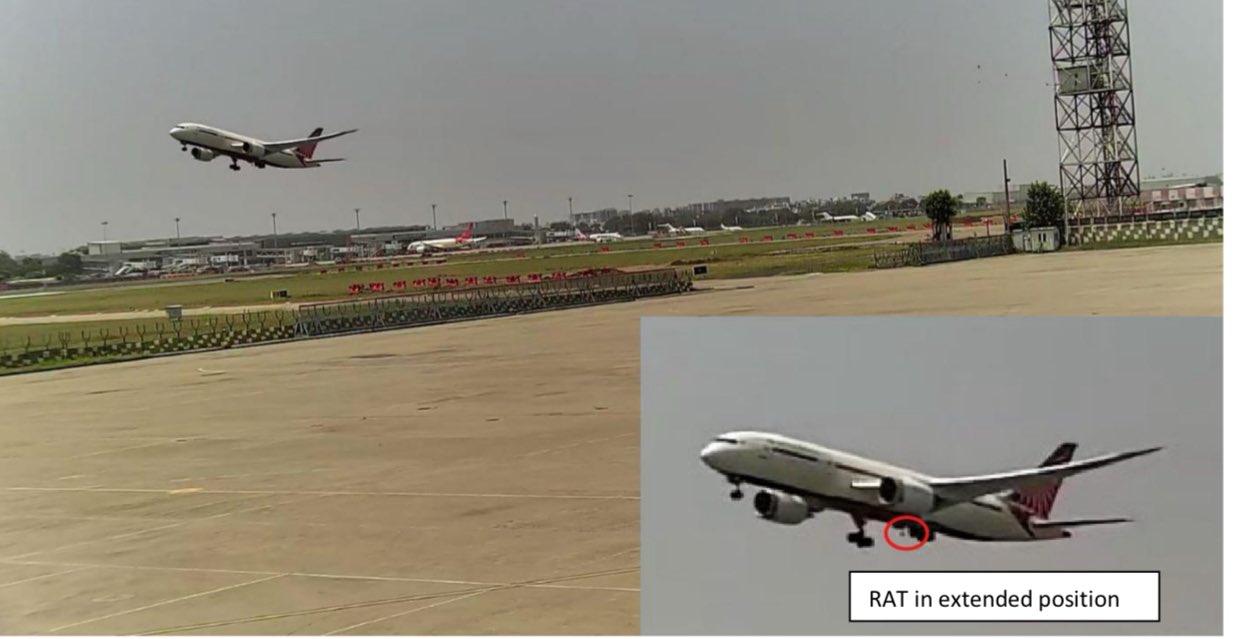
Meaning that at this point of the takeoff, the engine rpms had already rolled back and slowed to some sub optimal levels that took the engine driven generators off line, and triggering the software to deploy the RAT. The APU was also in the process of starting up
It is not clear as to which flight control laws or flight mode that they were in, but possibly, their full functionality would have been degraded, allowing limited flight control options available to the flight crew
Aircraft with fly-by-wire flight controls require computer controlled flight control modes that are capable of determining the operational mode (computational law) of the aircraft. A reduction of electronic flight control can be caused by the failure of a computational device, such as a flight control computer, an information providing device, such as the Air Data Inertial Reference Unit (ADIRU) or the failure of multiple systems (dual hydraulic failure, dual engine failure etc). Electronic flight control systems (EFCS) also provide augmentation in normal flight, such as increased protection of the aircraft from overstress or providing a more comfortable flight for passengers, by recognizing and correcting for turbulence and providing yaw damping.
Two aircraft manufacturers produce commercial passenger aircraft with primary flight computers that can perform under different flight control modes (or laws). The most well-known are the Normal, Alternate and Direct Laws.
Boeing flight control laws can degrade due to various factors, leading to reduced functionality or even complete loss of some flight control protections. These degradations can be caused by system failures, sensor malfunctions, or when the aircraft transitions between different flight phases or control modes. Understanding these degradation modes is crucial for pilots to maintain safe aircraft control.
A reduction of electronic flight control can be caused by the failure of a computational device, such as a flight control computer, an information providing device, such as the Air Data Inertial Reference Unit (ADIRU) or the failure of multiple systems (dual hydraulic failure, dual engine failure etc). Electronic flight control systems (EFCS) also provide augmentation in normal flight, such as increased protection of the aircraft from overstress or providing a more comfortable flight for passengers, by recognizing and correcting for turbulence and providing yaw
The 787 is a fly by wire platform
There were no unilateral decisions in the cockpit. Both pilots were trying to salvage the situation. The pilot flying (PF) was Kundra, the Copilot, and the pilot monitoring (PM) was the Captain.
One is pretty sure that the captain, who was also instructor qualified, would have taken over the controls within a few seconds of the emergency manifesting. Dual engine failure on take off is a single point failure mode and there are very few instances of recovery, unless the aircraft has gained sufficient height, allowing the flight crew to circle back and land back on the runway or find some clear ground to let down. This crew did not have either of those options.
Boeing and Airbus both have strict guidance against restarting the engines during TOGA below 400ft.
BTW, In an actual emergency, no one ever follows this rule. They all get on the controls ASAP, and handle the emergency as best they can, but in a simulator they always do or else they get failed and rescrubbed leaving a black mark on their records, and probably get invited to the chief pilot's office for some tea and biscuits which will precede the unpleasantries that will surely follow
